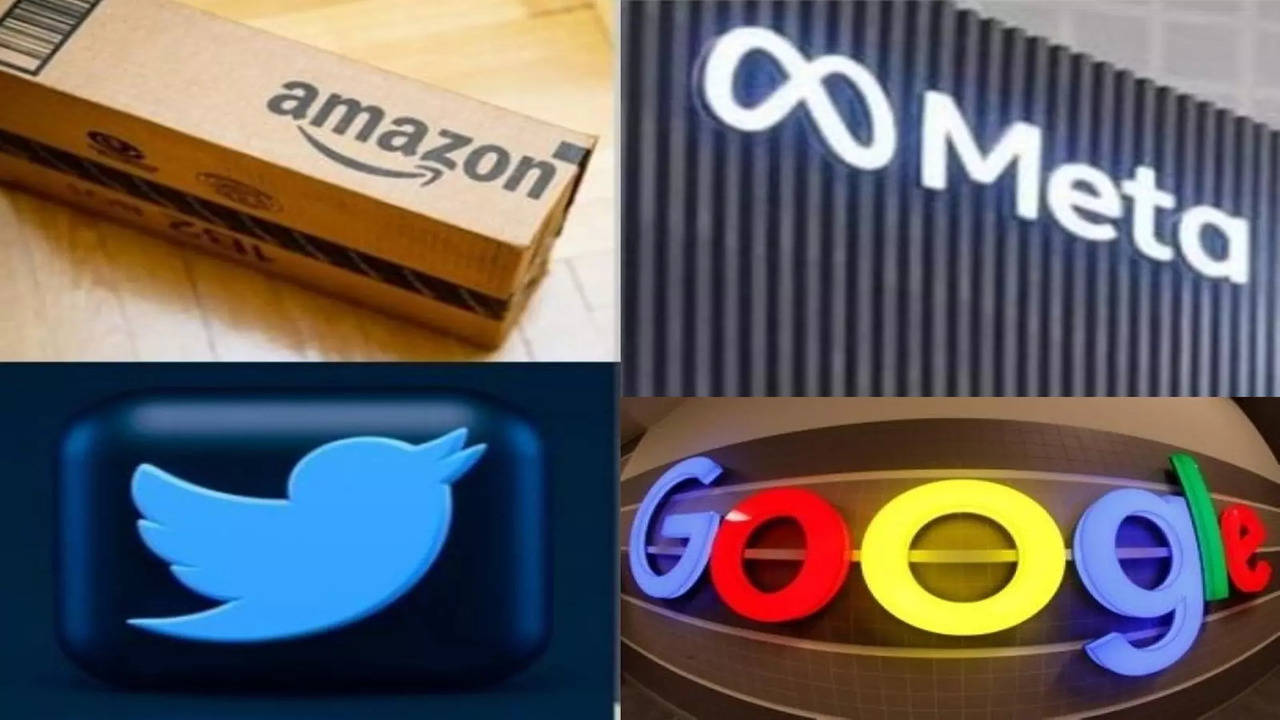Big Tech Companies Make A Comeback, Google And Microsoft Report Robust Quarterly Sales Growth
2023 has been a tough year for Big Tech companies, and they have encountered a host of economic challenges that tested their resilience and adaptability. As they steered through economic uncertainty marked by inflation, supply chain disruptions, geopolitical tensions, economic recession, the U.S.-China rivalry, energy crises, and slowing revenue growth, these challenges significantly impacted the world of Big Tech.

Microsoft and Google have reported robust quarterly sales growth, marking a continuing resurgence in the world of Big Tech in a year which had its fair share of challenges.
The turnaround follows the participation of Alphabet, Microsoft, and Snap in the earnings season, all delivering strong results for the quarter ending in September.
Alphabet, the parent company of Google, unveiled quarterly sales of $76.69 billion on Tuesday, reflecting an 11% increase compared to the same period in the preceding year; the company also reported quarterly profits of $19.69 billion.
Meanwhile, Microsoft experienced a 13% year-on-year growth in sales, reaching $56.5 billion, surpassing expectations, with quarterly profits surging to $22.3 billion, marking a 27% increase from the previous year.
Snapchat’s parent company, Snap, reported a return to sales growth during the September quarter after two consecutive quarters of declining sales. The company’s revenue stood at nearly $1.2 billion, marking a 5% increase compared to the previous year, exceeding analysts’ projections. However, the company reported a net loss of $368 million.

These tough yet necessary measures were in response to a challenging 2022 when advertisers and clients reduced their spending due to concerns about the macroeconomic environment.
Despite surpassing Wall Street’s sales expectations, both Alphabet (GOOGL) and Snap (SNAP) saw their shares dip by approximately 5% in after-hours trading following the earnings reports, although Snap’s stock quickly rebounded; in contrast, Microsoft (MSFT) shares gained around 4% in after-hours trading.
Tejas Dessai, a research analyst at the investment fund GlobalX, remarked, “Q3 tech season has been quite strong thus far,” emphasizing that these results refute concerns about near-term economic weakness.
Regarding Google’s earnings, the company’s advertising business generated quarterly revenue of $59.6 billion, up from $54.5 billion in the previous year. YouTube ads brought in around $7.9 billion in revenue, representing a roughly 12% year-over-year increase.
In an analyst call on Tuesday afternoon, Alphabet CEO Sundar Pichai disclosed that YouTube Shorts, Google’s TikTok competitor, achieved a significant milestone of 70 billion daily views in the previous quarter.
However, Google’s cloud business reported revenue of $8.41 billion, falling short of analysts’ estimates.
Jesse Cohen, a senior analyst at Investing.com, attributed Alphabet’s after-hours stock drop to the relatively weak performance of its Google cloud platform.
:format(webp)/cdn.vox-cdn.com/uploads/chorus_asset/file/24373580/1245214816.jpg)
Notably, Google finds itself in the midst of an antitrust trial as U.S. prosecutors have levelled significant allegations of anticompetitive behaviour against the tech giant; despite these challenges, Google has signalled its commitment to substantial investments in generative artificial intelligence technology.
Shifting to Microsoft’s earnings, the company’s investments in AI technology contributed to sales growth during the September quarter, particularly in its key cloud division. Sales from Microsoft’s “intelligent cloud” business, its largest revenue driver, surged by 19% from the year-ago quarter, reaching $24.3 billion.
Additionally, revenue from Microsoft’s “productivity and business processes” business, which encompasses LinkedIn and Office commercial and consumer products, grew by 13% year-over-year, amounting to $18.6 billion.
Analyst Jesse Cohen noted that “Microsoft is firing on all cylinders, and AI is clearly driving growth.”

However, economic uncertainties among consumers continued to impact the company’s financial performance. Despite a 3% increase in the overall “more personal computing” segment, revenue from devices, including laptops, tablets, and Xbox consoles, declined by 22% year-over-year.
These concerns about a potential economic slowdown could continue to affect the company as it enters the critical holiday device sales season.
Microsoft’s report is its first since the completion of the $69 billion acquisition of “Call of Duty” maker Activision Blizzard earlier in the month. Although this deal did not influence this quarter’s results, it is expected to significantly boost Microsoft’s gaming business, as the company now controls 30 game studios and a compelling library of games.
Snap
Snap also reported strong sales growth, attributing it in part to ongoing efforts to enhance its advertising technology following changes to Apple’s app tracking policies; these changes had adversely affected the business models of Snapchat, Facebook, and other platforms.
Snap announced that it has achieved a milestone of 406 million daily active users, marking a 12% increase compared to the previous year. Furthermore, time spent watching Spotlight, Snapchat’s TikTok equivalent, witnessed a remarkable 200% year-over-year growth.
Snap has been diversifying its revenue streams and recently revealed that it has attracted more than 5 million subscribers to its Snapchat+ subscription program. Additionally, the company announced the retirement of its Chief Operating Officer, Jerry Hunter, who will continue to support the transition until July 1, 2024.
Snap expressed caution due to some advertisers temporarily pausing their spending during the Israel-Hamas conflict; as a result of the unpredictable nature of the conflict, Snap refrained from providing formal guidance for the fourth quarter but internally expects year-over-year quarterly revenue growth between 2% and 6%.

A Tough Year For Big Tech Firms
Inflation and Currency Volatility
Inflation, which is the general increase in prices, posed a significant challenge for tech companies; as the cost of materials and labour increased, profit margins were squeezed. Additionally, currency volatility further worsened these concerns.
Companies with global operations had to grapple with fluctuations in exchange rates, impacting both their expenses and revenues; hence, to mitigate these risks, businesses implemented strategies like hedging to minimize the financial impact of currency fluctuations.
Supply Chain Disruptions
The tech industry relies heavily on intricate global supply chains; however, in 2023, supply chain disruptions became increasingly common.
Factors such as the pandemic, natural disasters, and trade tensions led to delays and shortages of crucial components; as a result, tech giants faced difficulties in sourcing essential hardware and semiconductor chips, affecting the production of consumer electronics and other tech products.
Geopolitical Tensions
Geopolitical tensions between major world powers added another layer of complexity.
The U.S.-China trade dispute, in particular, has ramifications for tech companies, impacting market access, intellectual property rights, and cross-border data flows. Currently, Businesses are carefully trying to navigate these tensions to avoid collateral damage in a broader geopolitical conflict.
Economic Recession
A looming economic recession was a concern for many tech companies as economic downturns typically lead to reduced consumer spending and corporate budget cuts, impacting demand for tech products and services.
Hence, with little option, most companies had to reassess their growth strategies and tighten their belts to weather the economic storm effectively.
U.S. vs. China Rivalry
The intensifying rivalry between the United States and China is also profoundly affecting the tech sector.
Tech companies are facing increased scrutiny regarding national security and data privacy, leading to regulatory challenges and export restrictions; for companies with significant operations in both countries, it has become more challenging to maintain a delicate balance.
Energy Crisis
In 2023, energy concerns took center stage, as the tech industry, characterized by data centers and energy-intensive operations, grappled with the need for sustainable practices.
The growing demand for computing power and data storage placed a strain on energy resources, leading to debates about the environmental footprint of tech companies’ hence, many made commitments to transition to renewable energy sources and adopt greener practices to address these concerns.

Slowing Revenue Growth
Tech companies, particularly the giants that had experienced exponential growth in previous years, found themselves grappling with slowing revenue growth.
This shift could be attributed to market saturation, increased competition, or a maturing product life cycle, and companies sought new avenues for innovation, expansion, and diversification to counteract this trend.
The Last Bit,
FY 2023 brought an array of economic challenges to the forefront for Big Tech companies.
These challenges demanded not only adaptability but also a deep commitment to sustainable practices and global diplomacy, and tech giants were compelled to reassess their strategies, strengthen their supply chains, and engage in prudent risk management to steer through the complex economic dynamics at play currently.





